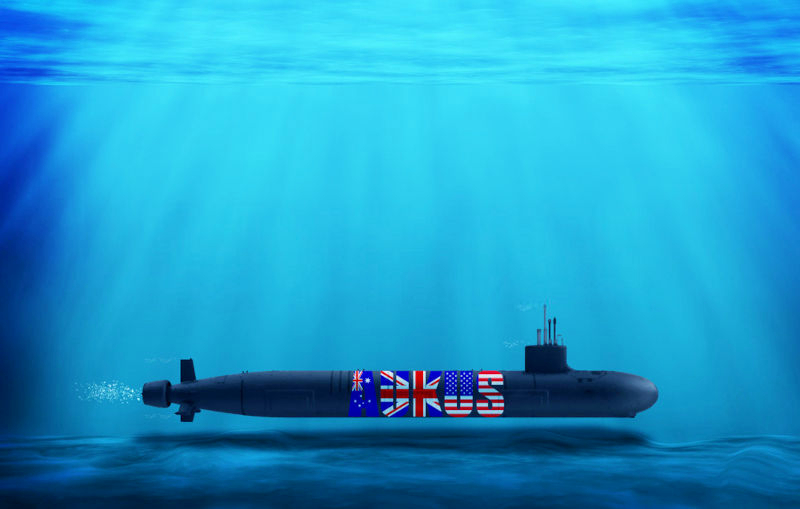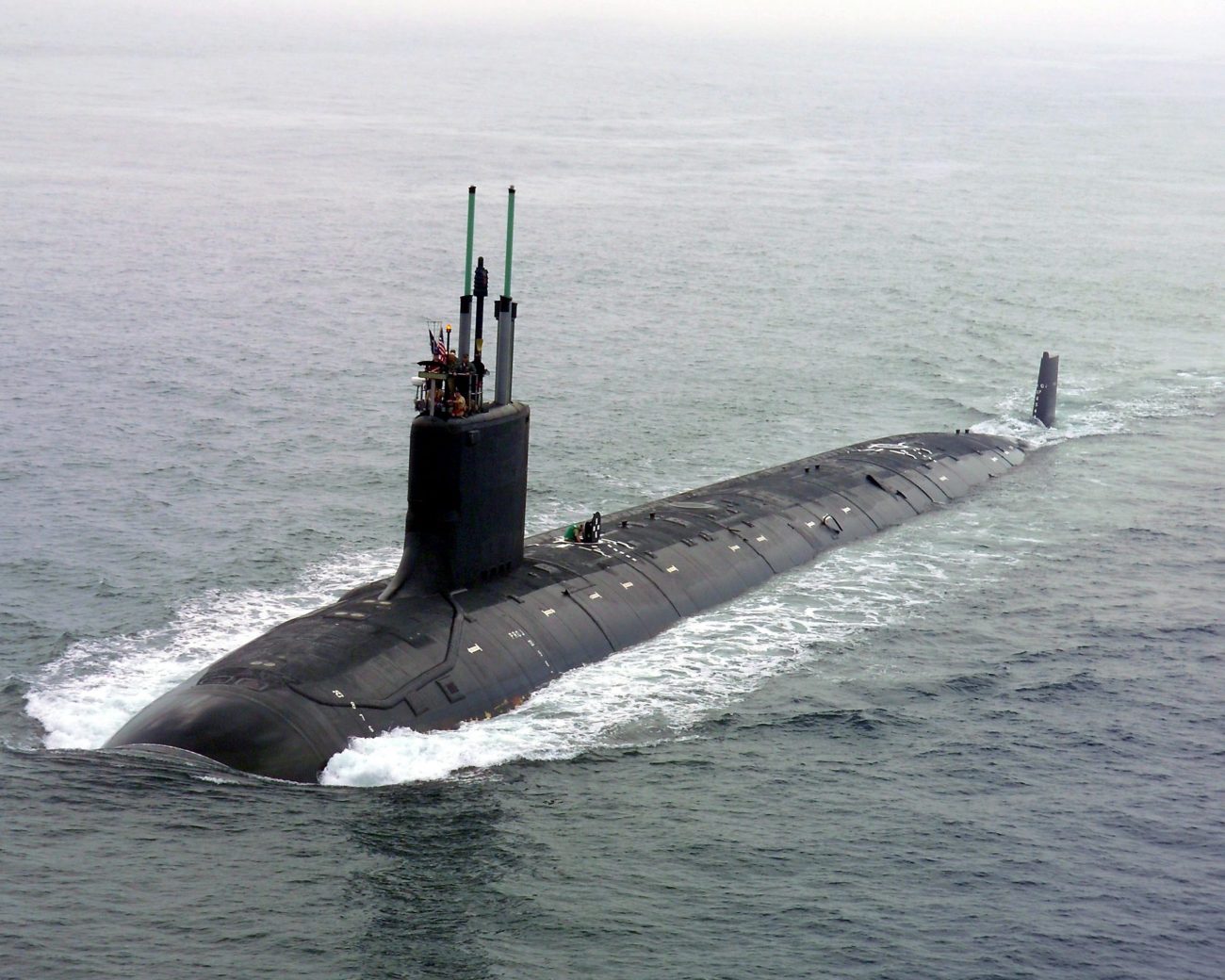It was hailed as Australia’s biggest defense agreement ever, one that could redefine the security architecture in the crucial Indo-Pacific and challenge China’s rising belligerence in the region.
However, four years after the agreement, worth nearly USD 240 billion, was signed, the deal has not progressed, with the US, the strategic pivot of the landmark agreement, launching a formal review of the contract last month.
On July 29, the US announced that it aims to complete a review of its AUKUS security partnership with Britain and Australia by the fall, buying Canberra more time to convince Washington of the pact’s importance.
The US Under Secretary of Defense for Policy, Elbridge Colby’s office, said in a post on X that the review will be an “empirical and clear-eyed assessment” of the deal.
“The Department anticipates completing the review in the fall. Its purpose will be to provide the President and his senior leadership team with a fact-based, rigorous assessment of the initiative.”

The Trump administration has launched a review into the 2021 deal struck during the Biden administration on June 11, causing alarm in Canberra and raising eyebrows among other US allies and partners about the future of the three-way submarine pact.
The US decision to review the four-year-old agreement, widely considered to be Australia’s most significant defense pact ever, was cited as further proof of US unreliability under the Trump administration.
Notably, earlier, it was reported in the US media that the Department of Defense (DoD) would finish the review within 30 days. The new timeline suggests that either the review has not formally started, or the US has decided to extend the timeline.
Either way, it gives Canberra and London more time to convince Washington of the criticality of the defense pact in containing China and providing net security in the Indo-Pacific region.
AUKUS: Australia’s Biggest Defense Pact Ever
The AUKUS pact, signed in September 2021, is a trilateral security partnership between Australia, the United Kingdom, and the United States aimed at promoting a “free and open Indo-Pacific.”
The deal has two central pillars.
Pillar 1 is about the supply and delivery of nuclear-powered attack submarines.
Under the pact, Australia will buy three second-hand nuclear-powered but conventionally-armed (SSNs) Virginia-class submarines from the US, with options to purchase two more. These SSNs were expected to be delivered to Australia beginning in the 2030s.
After that, the plan is to design and build an entirely new nuclear-powered submarine model for the UK and Australian navies.
Furthermore, the United States and the UK will deploy their own nuclear-powered submarines in the region as part of “Submarine Rotational Force-West.”
Pillar 2 is about the allies collaborating on their “advanced capabilities,” including sharing military expertise in critical areas such as long-range hypersonic missiles, undersea robotics, quantum technology, and AI.
Why AUKUS Is Critical To Australia
AUKUS is Australia’s most significant defense pact ever.
The deal will significantly enhance Australia’s undersea capabilities, as Canberra currently only operates diesel-electric submarines. The nuclear-powered submarines offer many advantages, such as extended range, endurance, and stealth—features that have become necessities.
Notably, the deal would have made Australia the only country besides the UK with which the United States would share the nuclear propulsion technology.
Furthermore, the commitment by the US and the UK to deploy their own nuclear-powered submarines in the region will strengthen Australia’s position in the Indo-Pacific. Besides, Australia will get access to sensitive technologies such as hypersonic weapons, quantum technology, and AI, giving it a significant military capability boost.
AUKUS is Australia’s biggest-ever defence project, with Canberra committing to spend A$368 billion (US$240 billion) over three decades to the programme, which includes billions of dollars of investment in the U.S. submarine production base.
Why US Wants To Review AUKUS?
In the US, questions have been raised over the deal’s relevance to Washington in an atmosphere where the narrative is dominated by Trump’s ‘America First’ policy.
Colby’s office said the AUKUS review would “be an empirical and clear-eyed assessment of the initiative’s alignment with President Trump’s America First approach.”
Notably, Colby has been a known AUKUS skeptic.
He has previously expressed skepticism over the benefits of the pact’s submarine sales element, arguing before the US Senate’s Armed Services Committee in March that the United States wasn’t producing enough submarines to meet its own requirements in the Indo-Pacific region.

When the Senate’s Armed Services Committee asked Colby about the AUKUS deal, Colby replied: “I have expressed concerns, as I understand, shared by many on this Committee, regarding U.S. attack submarine force structure and production rates. I believe we must increase U.S. attack submarine production to meet U.S. military requirements in the Indo-Pacific region.”
However, during that hearing, Colby also expressed his commitment to AUKUS, saying, “I also agree with Secretary Hegseth that AUKUS is a model for how we should engage
with our closest allies and partners when it comes to technology cooperation, scaling
production, and integrating our industrial bases.”
Media reports have also claimed that the US wants to enforce additional conditions on the deal. These include a commitment by Australia to spend 3.5 % of its GDP on defense, and a promise by Canberra to deploy its submarines in support of the US in case of a conflict with China.
While speaking in front of the US Senate’s Armed Services Committee in March, Colby suggested that the US should press Australia to spend more on defense.
“The main concern the United States should press with Australia, consistent with the
President’s approach, is higher defense spending. Australia is currently well below the 3% level advocated for NATO by NATO Secretary General Rutte, and Canberra faces a far more
powerful challenge in China,” Colby has said.
Notably, the US is reviewing the AUKUS deal, even as the UK and Australia are doubling down on the pact. Earlier this week, the UK and Australia signed a bilateral 50-year pact to cement the AUKUS partnership. Called the “Geelong Treaty,” the UK-Australia pact enables “comprehensive cooperation on the design, build, operation, sustainment and disposal” of SSN-AUKUS submarines.
The AUKUS pact, in many ways, signifies the US’s commitment to not only Australia’s security but broadly to the whole of the Indo-Pacific region. If Washington falters on the AUKUS agreement, it will send negative signals to other US regional allies, such as Japan, South Korea, and Taiwan.
Australia is also part of QUAD, another multilateral defense pact led by the US, which is focused on containing China in the Indo-Pacific region. This move by the US will also raise questions about Washington’s commitments to QUAD.
However, the extension of the deadline for the AUKUS review has provided Australia with another opportunity to convince Washington that the deal is also in the US interests.
Speaking on the development today, the Australian Prime Minister Anthony Albanese denied that the US is using its AUKUS review as “leverage.”
“We expected a review from an incoming government, just like the Keir Starmer government did (in the UK). We expect that those things take longer than just 30 days,” Albanese added.
Asked if it was being used as “leverage,” he simply replied: “No.”
It remains to be seen what compromises, if any, are struck by Canberra to save the deal.
- Sumit Ahlawat has over a decade of experience in news media. He has worked with Press Trust of India, Times Now, Zee News, Economic Times, and Microsoft News. He holds a Master’s Degree in International Media and Modern History from the University of Sheffield, UK.
- VIEWS PERSONAL OF THE AUTHOR.
- He can be reached at ahlawat.sumit85 (at) gmail.com




